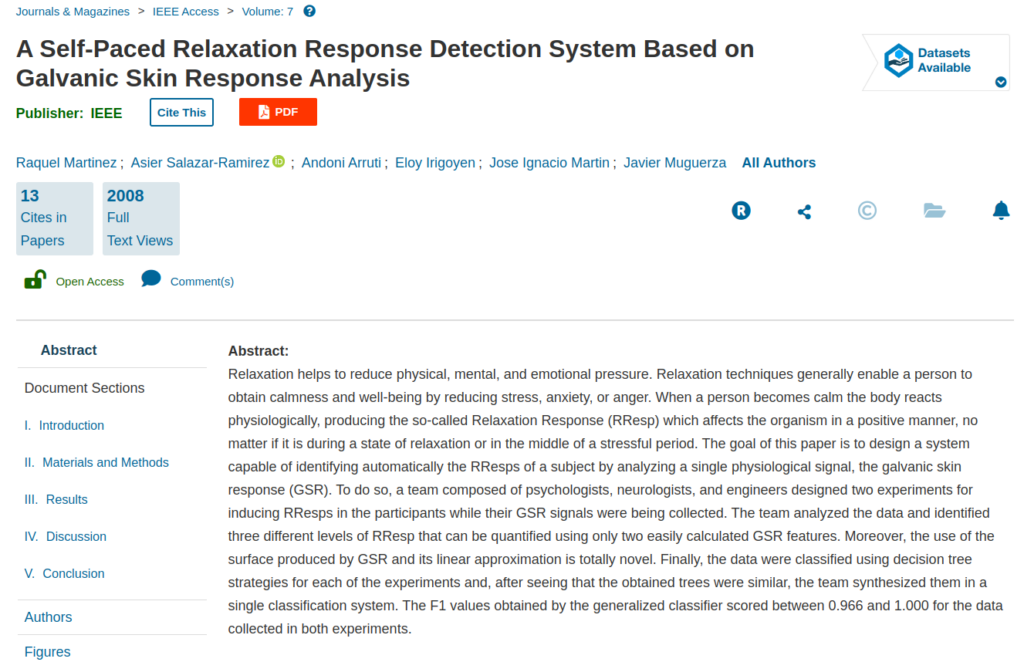Relaxation helps to reduce physical, mental, and emotional pressure. Relaxation techniques generally enable a person to obtain calmness and well-being by reducing stress, anxiety, or anger. When a person becomes calm the body reacts physiologically, producing the so-called Relaxation Response (RResp) which affects the organism in a positive manner, no matter if it is during a state of relaxation or in the middle of a stressful period. The goal of this paper is to design a system capable of identifying automatically the RResps of a subject by analyzing a single physiological signal, the galvanic skin response (GSR). To do so, a team composed of psychologists, neurologists, and engineers designed two experiments for inducing RResps in the participants while their GSR signals were being collected. The team analyzed the data and identified three different levels of RResp that can be quantified using only two easily calculated GSR features. Moreover, the use of the surface produced by GSR and its linear approximation is totally novel. Finally, the data were classified using decision tree strategies for each of the experiments and, after seeing that the obtained trees were similar, the team synthesized them in a single classification system. The F1 values obtained by the generalized classifier scored between 0.966 and 1.000 for the data collected in both experiments.
A Self-Paced Relaxation Response Detection System Based on Galvanic Skin Response Analysis
Publication
IEEE Access
Vol 7, pp. 43730 - 43741
Abstract
Web and Email Links
Related Listings
Journal
Journal for the Scientific Study of Religion
Clinical observations suggesting a relationship between spiritual experiences, life purpose and satisfaction, and improvements in physical health led to the development of an Index of Core Spiritual Experience (INSPIRIT). Data from 83 medical outpatients showed the INSPIRIT to have a strong degree of internal reliability and concurrent validity. Multiple regression analyses showed the INSPIRIT to be associated with: (1) increased life purpose and satisfaction, a health-promoting attit […]
Journal
Annals of the New York Academy of Sciences
Stress is a well-known risk factor in the development of addiction and in addiction relapse vulnerability. A series of population-based and epidemiological studies have identified specific stressors and individual-level variables that are predictive of substance use and abuse. Preclinical research also shows that stress exposure enhances drug self-administration and reinstates drug seeking in drug-experienced animals. The deleterious effects of early life stress, child maltreatment, a […]
Journal
Fertility and Sterility
Objective: To replicate previously reported psychological improvements in infertile women attending a group behavioral treatment program. Design: Psychological and demographic data were collected before entering and again upon completion of a behavioral medicine program on a second cohort of patients. Setting: The program was offered in the Division of Behavioral Medicine, an outpatient clinic of the Department of Medicine at New England Deaconess Hospital. All patients were receivi […]

